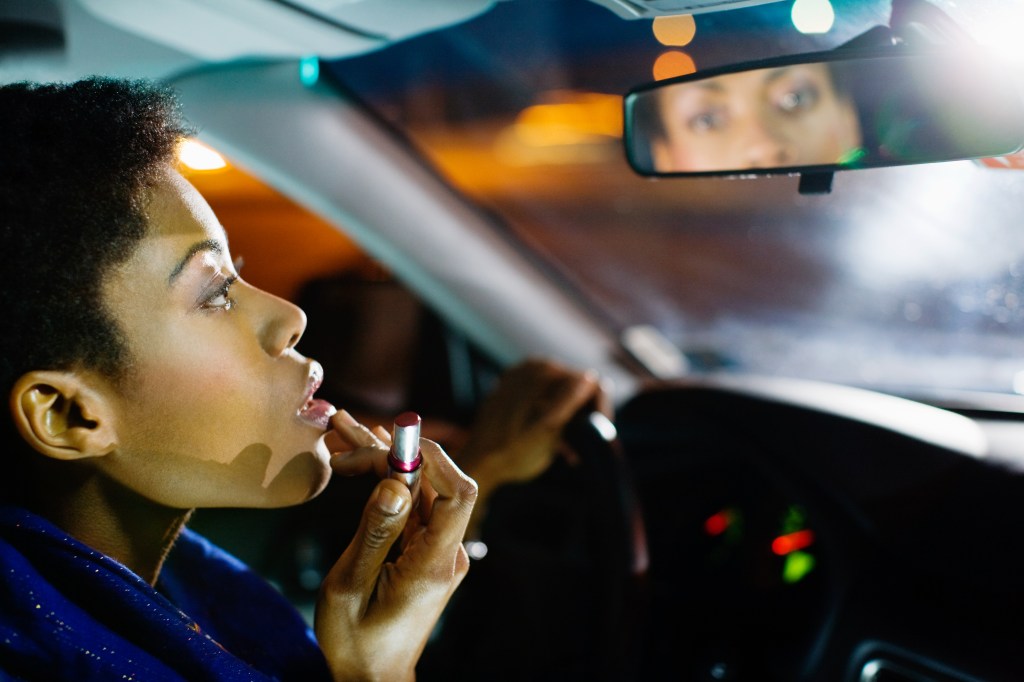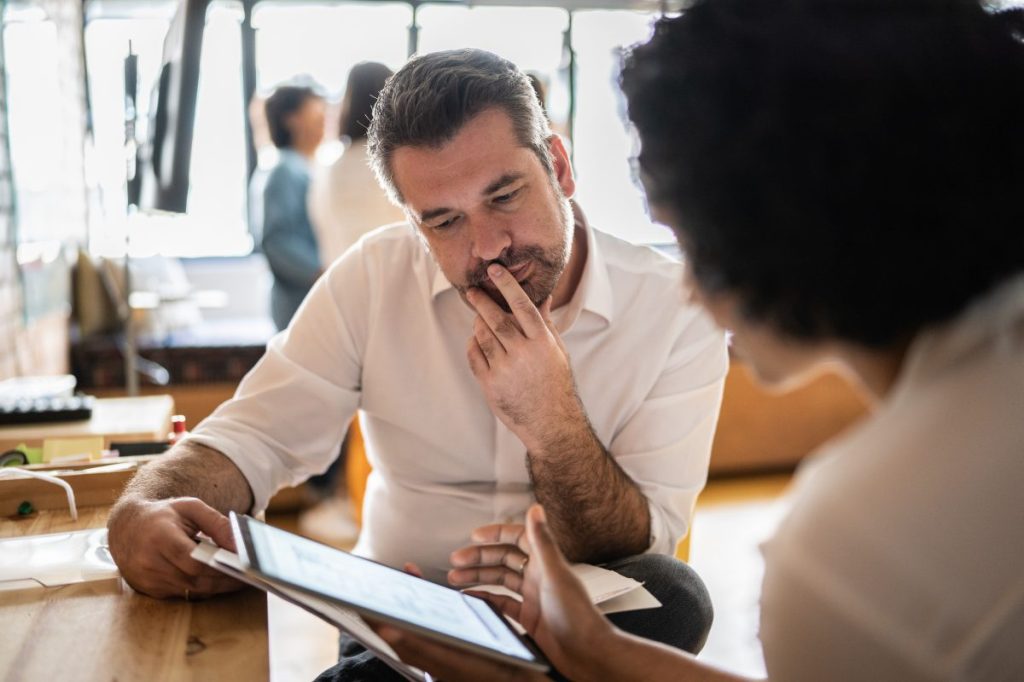Trends that are here to stay
Trend 1: Store within a store
Designated space for stores within other stores has been a noticeable in-store trend. For example, beauty spaces with specific lighting, signage, and carpeting within pharmacies.
This trend has grown exponentially since stores reopened. For instance, Macy’s is opening 400 shop-in-shop stores, and Target has a dedicated Apple store within many locations.
Consumers can now walk into a department store and find a broader range of products, thus improving the overall shopping experience.
Trend 2: Click. Collect. Complete.
While click and collect curbside pickup existed pre-pandemic, it found new life during COVID-19 lockdowns because of safety concerns and an urgent need for accelerated delivery mechanisms.
For instance, before the pandemic, if you ran out of milk, you could go to the store and get it immediately. People faced the same problem during the pandemic but could no longer step out of the house to get it–they needed someone to get it for them. Providing this offering became the number one priority for stores around the world.
As of 2021, about 25% of U.S. and 19% of Canadian customers use the “click, collect, complete” method of grocery shopping. 63% of the remaining U.S. customers say they are open to trying it.
Click and collect pickups functioned as full-service solutions, but left no room for flexible shopping—once the order was submitted, shoppers couldn’t make adjustments. That’s where the click, collect, complete trend came in.
With this fulfillment method, shoppers can have their usual items prepared for them, while they complete their shopping experience by shopping in-store for anything else they may need or want.
While click and collect helps shoppers be as hands-off and efficient as possible, “click, collect, complete” works to provide shoppers with an efficient experience that still offers them the freedom to browse and shop as they see fit.
Though it’s gaining popularity, some categories of customers insist on completing their shopping experience in-store and picking up their items in person. There’s a clear trend here of consumers delegating the boring shopping tasks of repeat goods while completing the rest of the shopping for themselves.
Consumers still prefer to pick their own ice cream, fruits, vegetables, and frozen products. Among non-perishables, people want to pick up clothes, personal care items, and home decor.
Encouraging shoppers to complete their shopping experience in-store, we need to study their online shopping behavior and provide a similar experience in the store where they will likely browse and spend more.
Trend 3: In-store pickup
In-store pickup gained traction during the pandemic as well. Consumers view this shopping method as a highly convenient alternative to searching in-store aisles. In 2021, about 37% of shoppers bought groceries using curbside or in-store pickup.
Consumers continue to use in-store pickup facilities despite the 147% growth in online delivery since 2020. They are willing to pay 45% more for products they can quickly get through online delivery.
Trend 4: Same-day delivery
Amazon kicked off the delivery wars by guaranteeing two-day delivery. Major big box stores such as Walmart and Costco promised one-day delivery. Rapid delivery strategies faced setbacks during the pandemic, but picked up again when lockdowns were lifted.
Stores like Costco now offer same-day delivery where products arrive hours after ordering.
Bringing shoppers back into stores
Although online shopping and alternative fulfillment methods have grown in popularity, consumers still report a desire to visit physical stores—6 out of 10 go into stores simply to browse the selection. Retailers can still convert online shoppers to in-store customers with tried and true promotional tactics:.
- Coupons: Having an in-store coupon that can only be redeemed physically. 63% of customers say they will be willing to come to the store to redeem coupons.
- Loyalty: Half of consumers surveyed by NielsenIQ said they would be willing to shop offline if the store had a dedicated loyalty program.
- Discounts or special offers: In-store discounts or offers can be redeemed at the time of purchase, especially for home decor items.
Winning in-store with Smart Store
NielsenIQ’s Smart Store solution can give you real-time insights into shopper behavior that can help steer your marketing efforts, in-store displays, planograms, and shelving concepts to win with consumers that are moving back to in-store shopping.
Smart Store brings gaming technology into the world of market research to provide the world’s first smart integration of store planning, merchandising, and rich shopper research techniques.
With these tools, you can identify shopper decision-making at the point of purchase. Smart Store helps you make faster, smarter, and more shopper-centric decisions to win in-store.




